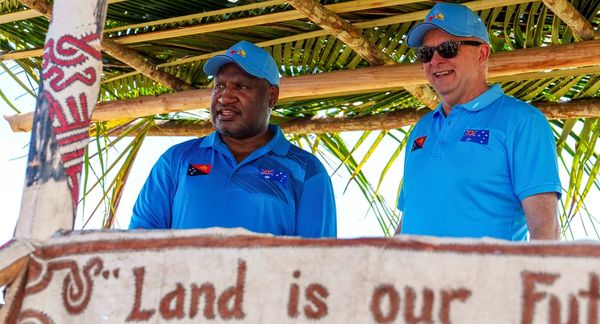
Nine inherited three big things out of the Fairfax merger: full ownership of leading local streaming service Stan, a controlling stake in real estate advertiser Domain, and the enduring hatred of News Corp.
The contributions of Stan and Domain to corporate profits were on display in the company’s release of its end-of-year figures today (revenue up by 15% to $1.3 billion, profits up 20%). Despite increased programming costs in an increasingly competitive market, Stan continues to make money off its 2.5 million subscribers. The largely digital Domain saw net profit up, proving yet again the value of booming real estate to Australian media.
For the increasingly heated war with News Corp, look to the companies’ mastheads. There, it’s journalistic hand-to-hand combat with an “exclusive” here and a spoiler rebuttal there, each weaponised to build up or tear down the trust that media need to monetise in the chase for subscriptions.
Australia hasn’t seen anything like this since the Sydney afternoon wars between The Sun and The Daily Mirror in the 1960s, both no defunt.
Between the lines
Is it just business — a hard-headed assessment from both sides that there’s only room for one commercial news media player — or is it a culture embedded in the deep history of the two companies?
At stake is a hoped-for domination of the market — maybe 1.5 million people in Australia are prepared to stump up somewhere between $300 (for The Sydney Morning Herald or The Age) and $500 (for The Australian) in annual subs for a comprehensive commercial news service.
You can see the stakes are at play when the giants clash over the big stories: Nine reports war crimes in Afghanistan (“unfair,” says The Australian, “a campaign to bring down one man”) or the Nine mastheads’ reporting on the not-for-profit Good to Great Schools Australia last week. By Saturday that had become “a hit piece”, according to a column by the organisation’s chair (and occasional News Corp columnist) Noel Pearson.
And what can any of us make out of this week’s competing claims about the Bainbridge matter?
Coming out of COVID, Nine would think it’s got the better of its US-headquartered competitor. In television, its free-to-air network, subscription streamer Stan and ad-supported 9Now are far stabler than pay-TV network Foxtel and its related streaming plays of Binge, Kayo and Flash.
In news media, the once-was Fairfax moved quicker than News Corp in meeting the demands of the shift to digital. Today’s figures show over 60% of publishing division revenues are now digital.
The SMH and The Age transitioned their audiences more readily to a business-to-consumer subscription offering than News Corp’s city tabloids. Nine offloaded its regional and suburban titles to Australian Community Media (and Stuff in New Zealand) while News Corp was mired with the “restructuring” costs of closing down its regional offering in the first months of COVID.
News Corp has traded on second-mover advantage, now claiming about 860,000 digital subscribers for its Australian mastheads (either its city tabloids package, The Australian, or both). Although Nine hasn’t released any figures for its mastheads since the 2019 merger, it’s probably about half as many.
News is also thought to have done better out of the news media bargaining code shakedown of Google and Meta, banking somewhere between $50 million and $100 million in commercial-in-confidence “content licensing” arrangements with Big Tech by including its US and UK mastheads. The Australian-only Nine is thought to be closer to $50 million.
News trades off a tighter straight-to-subscription paywall than compared to Nine’s more flexible access. It’s a straight trade-off between dollars now and influence (and, hopefully, dollars) later.
Back in the day
The News-Fairfax relations never recovered from their first clash back in 1960, when the Sydney company made the call that selling the fading afternoon Mirror to Rupert Murdoch was the least threatening option (than either the Telegraph-owning Sir Frank Packer or the Melbourne-based Herald and Weekly Times).
Through the Truth mastheads, the purchase delivered printing presses in Sydney and Melbourne that supported The Australian after its 1964 launch. It led Packer to sell the morning Daily Telegraph in 1972, creating the combined morning-afternoon competitor the Fairfax’s had sought to block with the original sale to Murdoch.
The Mirror went on to defeat the then-dominant, Fairfax-owned Sydney Sun through a mix of powerful tabloid journalism of crime, sport and scandal led by one of the company’s great editors, Brian Hogben. (Clever pricing also helped.) When The Sun conceded defeat and closed in 1988, Murdoch threw a gloating victory party for staff at The Mirror.
Job done.
Thirty months later, The Mirror also closed.







